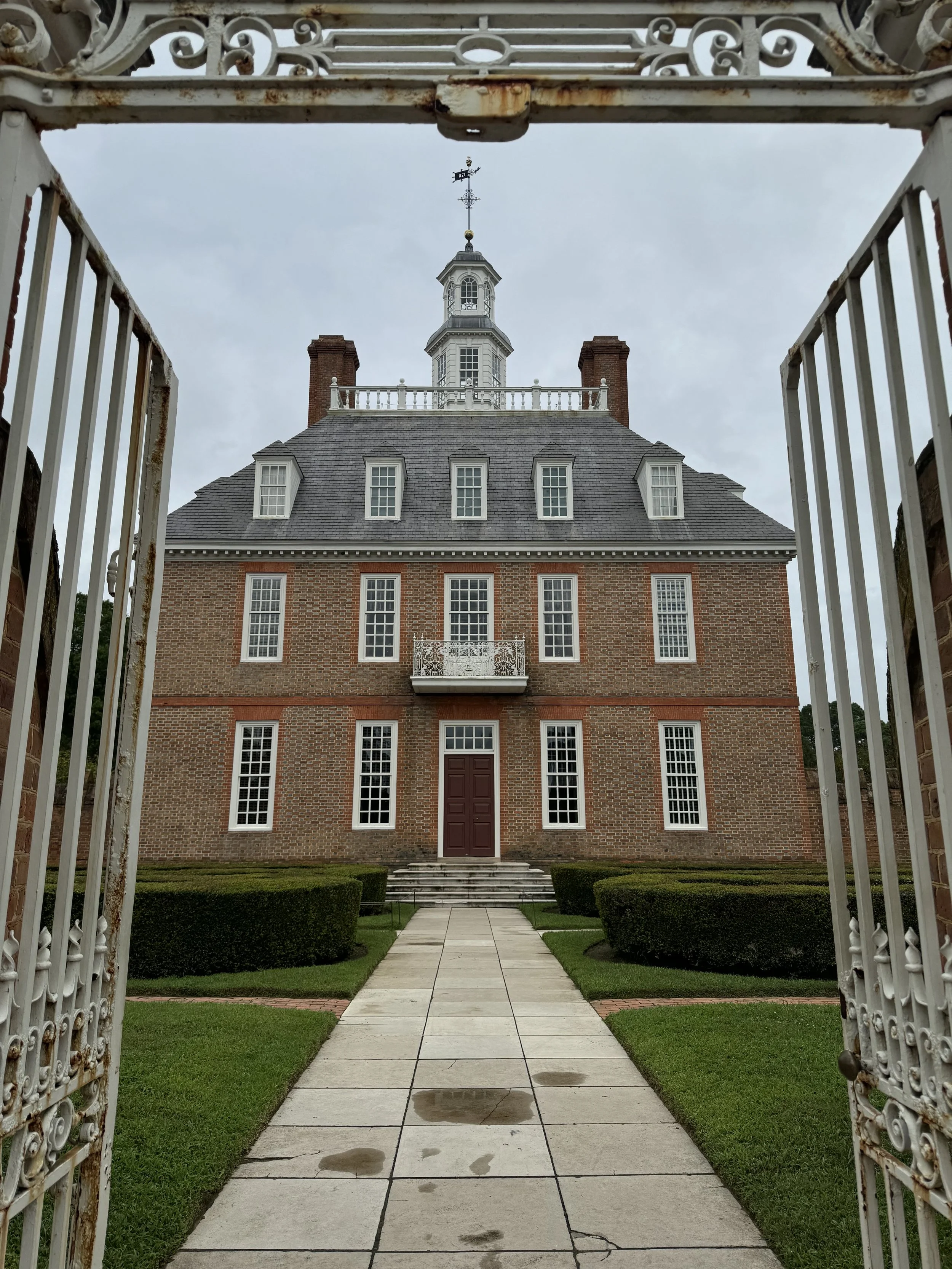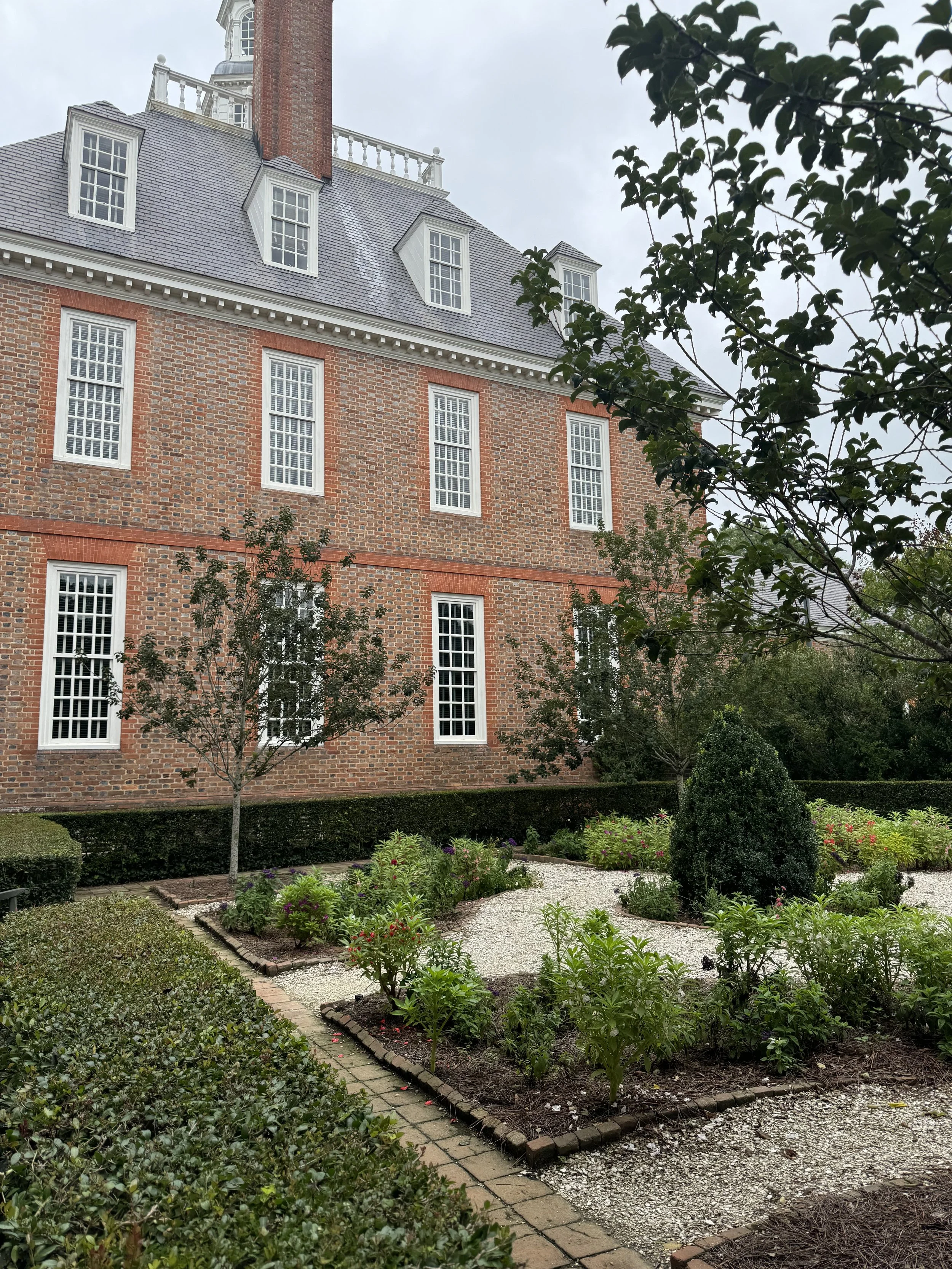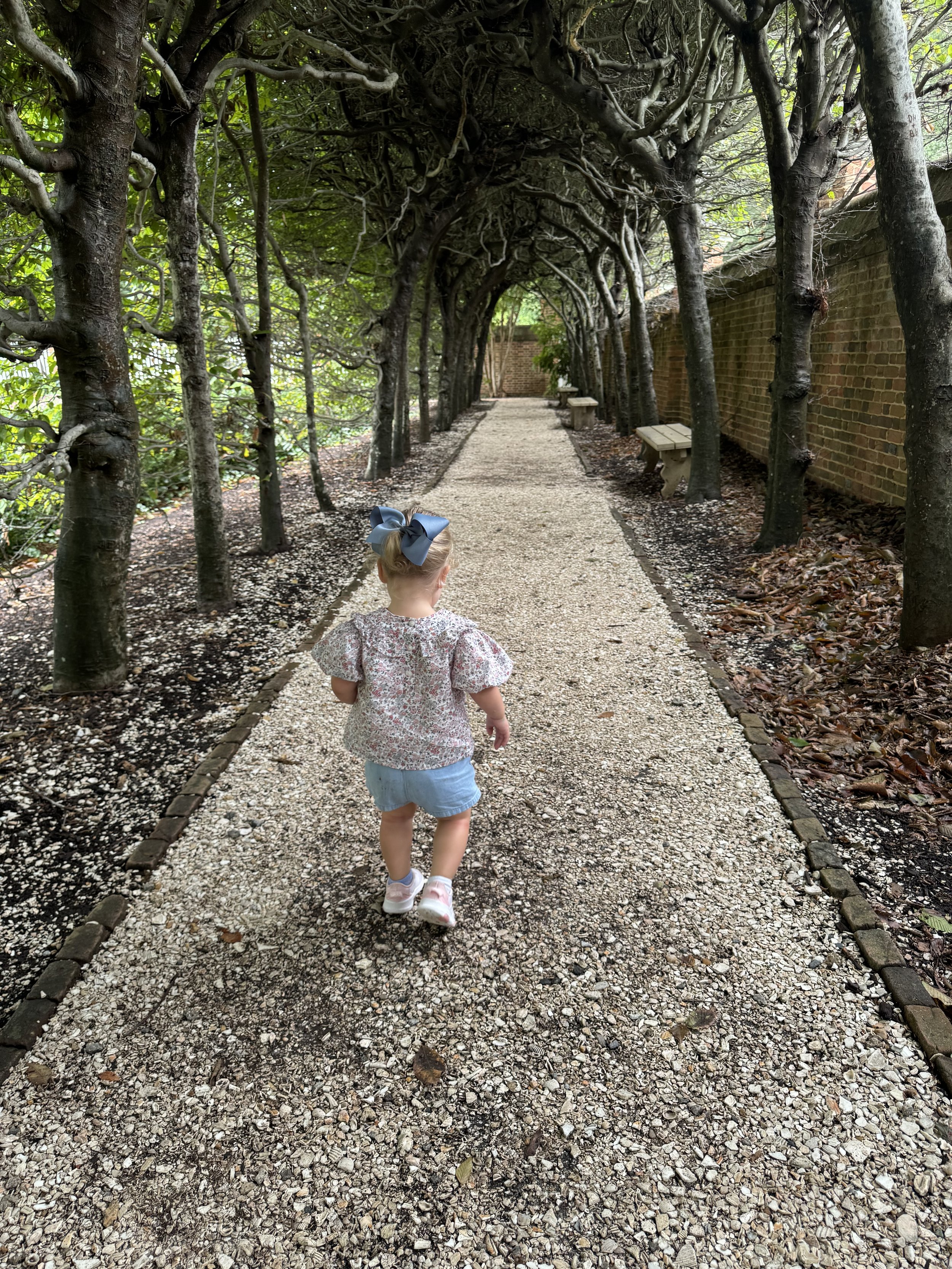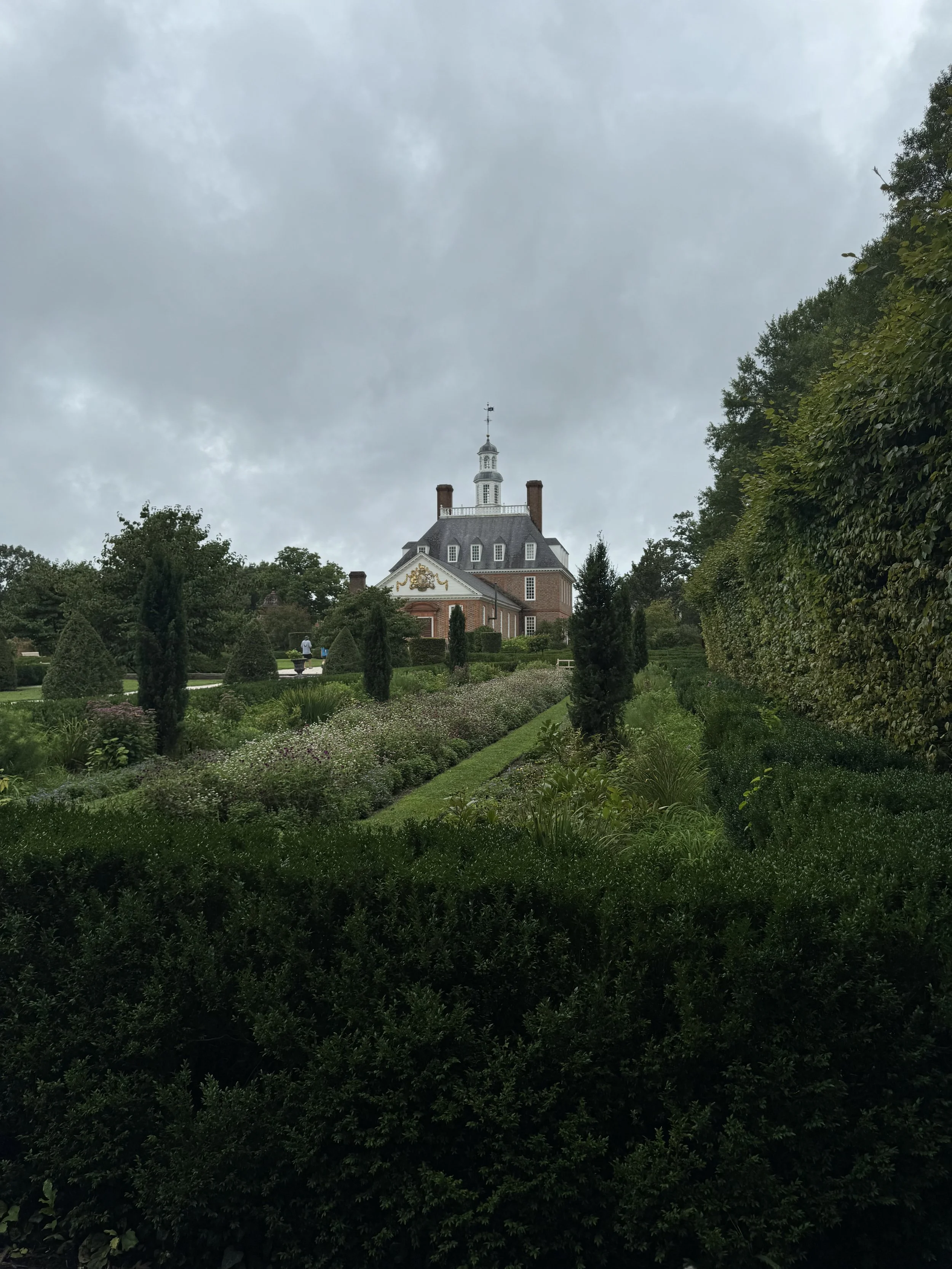English Garden Inspiration
Tucked behind the grand brick façade of the Governor’s Palace in Colonial Williamsburg lies a living tapestry of 18th-century elegance: the traditional English garden. The English garden is a traditional, well manicured agricultural showpiece that captures elegance of natural elements. The garden itself offers design inspiration like no other floral landscape in all of the historic district.
In the 1700s, gardens were not merely ornamental; they were symbolic. For the royal governor of Virginia, the palace gardens were a direct reflection of England’s influence and refinement. Inspired by the grand formal gardens of English estates, the layout emphasized symmetry, proportion, and hierarchy, all elements designed to project control over nature and convey status.
Walking through the Governor’s Palace gardens today, you’ll encounter a blend of geometric parterres, manicured hedges, topiary-lined paths, and axial walkways that lead the eye toward architectural focal points. These aren’t wild or rustic gardens—they are disciplined, controlled, and meant to impress.
Sections of the garden
The traditional English garden in the colonial period was rooted in the principles of the Renaissance and Baroque. The design favored structured borders, axial symmetry, gravel walkways, and enclosed garden rooms often bordered by clipped boxwoods. At the Governor’s Palace, these principles come to life in:
The Formal Garden– Neatly laid out with symmetrical beds and walking paths, this garden space demonstrates English precision and is often planted with seasonal displays.
The Maze Garden– A boxwood labyrinth designed for both entertainment and quiet reflection.
The Kitchen Garden– Located toward the rear of the grounds, this practical garden balanced beauty with utility, growing herbs, fruits, and vegetables used in the palace kitchens.
Flower choices: colonial-era favorites
The plant palette in these gardens reflects what was popular and available in the 18th century, either imported from England or cultivated in the colonies. Some of the key traditional English flowers and plants you’ll find include:
Boxwood– The backbone of the garden’s structure, used for edging paths and forming hedges.
Roses– Symbolic of English heritage and used for fragrance and beauty.
Larkspur – With its tall, spiky blooms in blues and purples, larkspur added drama and verticality to flower beds.
Foxglove– A striking cottage-garden classic, valued both for its bell-shaped flowers and medicinal history.
Poppies– Bright, self-seeding annuals that provided bursts of color.
Lavender– Used both ornamentally and for scenting linens and warding off insects.
In addition to flowers, the palace grounds featured culinary and medicinal herbs, such as thyme, sage, hyssop, and chamomile which were considered essentials in any colonial household.




